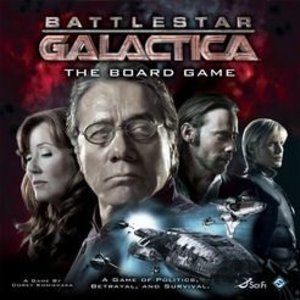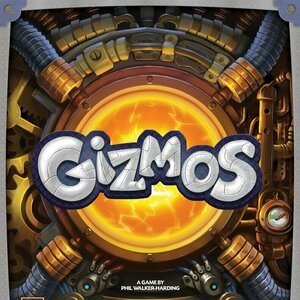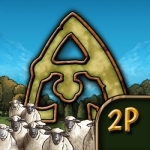
Agricola All Creatures 2p
Games
App
Agricola: All Creatures Big & Small is a digital adaptation of Uwe Rosenberg's award-winning...
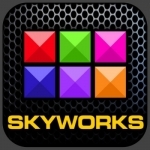
Mental Blocks® Free
Games and Entertainment
App
If you like Collapse!® and reMovem, and you’re ready for some mind bending brain melting fun,...
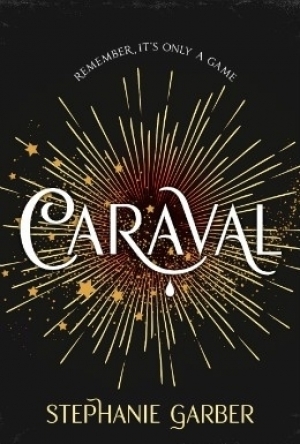
Caraval
Book
A mesmerising, magical and stunningly imaginative debut novel for anyone who loved The Night Circus....
Purple Phoenix Games (2266 KP) rated Battlestar Galactica: The Board Game in Tabletop Games
Feb 23, 2021
Disclaimer: There are several expansions for Battlestar Galactica. This review will not take any expansions into account, and will focus solely on the base game. Also, I do not intend to rehash the entire rulebook in this review, but rather provide an overview of the gameplay. – L
To setup for a game, follow the instructions in the rulebook – there are simply too many to detail here. Each player selects a Character, and receives the corresponding Character sheet and tokens. Based on the Characters selected, one player will receive the President title and another the Admiral title. Depending on how many players there are, a Loyalty deck is created and each player is secretly dealt a Loyalty card – either “You are not a Cylon” or “You Are a Cylon.” The Loyalty cards determine how you will play the game: human players win if they complete their given objective, and Cylon players win if they prevent the humans from completing their objective (by depleting resources, successfully invading the Galactica, or destroying the Galactica itself). The game is now ready to begin!
Battlestar Galactica is played over a series of rounds in which players take turns moving, performing actions, playing/drawing cards, etc. until either the human players or Cylon players have won the game. A player’s turn consists of 4 main steps, carried out in the following order: Receive Skills, Movement, Action, and Crisis. To begin your turn, you will draw Skill cards according to the skills listed on your Character sheet. Skill cards can be used to address crises or can provide special abilities. In the next step, Movement, you may move your Character to a different location/ship (all provide special actions). After moving, you will then choose one Action to perform – either listed on your current location, Character sheet, by using a Skill card, or you may choose to perform no action at all. Once you have completed your action, draw the top card of the Crisis deck, and resolve it. Depending on the Crisis card drawn, you may need to then Activate Cylon Ships or Prepare for Jump (more on this in a bit). If neither of those are listed on the Crisis card, then your turn ends and play moves to the next player.
I know that seems like a lot, but each turn of Battlestar Galactica can essentially be broken down into 2 phases: Player Actions and Space Combat. The first phase, Player Actions, is what is detailed above – drawing Skills, Movement, Actions, and drawing Crisis cards. This phase is where players make progress towards their objectives. Certain Actions or Skill cards earn specific rewards necessary to move forward in the game. Crisis cards can consist of Cylon attacks (activating and adding new Cylon ships to the board), Skill checks (all players secretly contribute Skill cards to either aid or sabotage the Skill check), or Events (resolved immediately). The second phase of play, Space Combat, takes place after the Crisis card has been drawn on each turn. Certain Crisis cards will show icons of Cylon ships, indicating that they are to be activated for combat, launched into play, or moved around the Galactica. Cylon ships will act based upon an action hierarchy, detailed in the rulebook. If the drawn Crisis card has the “Prepare for Jump” icon, move the fleet token forward on the Jump Preparation track, jumping the fleet if necessary (and moving the humans closer to their game-end objective). I have purposefully left out some elements of play, for you to discover on your own, or because they just provide intricate detail for the steps and actions described above. When the game-end objective is met by either the human players or the Cylons, the game is over and that respective race wins the game!
To say that there is a lot going on in Battlestar Galactica is quite an understatement. There are several rules and game elements that I did not touch upon, just because if I did then this review would be too long. With so many elements in play and of which to keep track, this game is not exactly for the faint of heart. The gameplay is very involved and requires a good amount of strategy – this is definitely a game that could take up most of a game night to play. That being said, I love this game. There is a lot going on, but that just provides players with so many different strategies to complete their objectives. Maybe you want to focus on dealing with Skill checks or Crisis cards, but maybe you’d rather think offensively and be prepared for any potential Space Combat. Can you help the crew efficiently manage its resources, or position its fleet to protect the Galactica itself? Your strategy must be adaptable at a moment’s notice to help you complete your objective….whatever it may be.
Speaking of which, the fact that there may or may not be secret Cylon players attempting to disrupt your plans really takes a hidden identity game to the next level. Cylons want to sabotage the humans, but in subtle ways as to not be found out – because once a Cylon is revealed, the humans can target and hinder their turns. Can you convince the humans that your previous actions were honest mistakes, or will they catch on that you are trying to undermine their efforts? The elements of deception and bluffing in this regard make the game much more immersive and make it feel realistic – there is a traitor among us and we have to find them, while also completing our own objectives. You really start to question who to trust and how your own actions can be perceived by your fellow players. There have been times, when playing this game, that we have taken breaks for dinner or snacks, and all players pocketed their cards rather than leave them on the table, vulnerable to sneaky opponents. Battlestar Galactica is definitely engaging for all players, and for such an involved and lengthy game, that is something to be applauded.
Let’s touch on components for a minute. The production quality of this game is great. The cardboard elements, including resource dials, are thick and sturdy. The cards and Character sheets are quality, colorful, and feel good in hand. And the plastic ships are well made too. The artwork consists mainly of screen caps from the TV show (which I admittedly have not yet seen…) but the theme and cohesiveness of the components makes for an immersive and engaging game overall.
In general, I am not a person who enjoys hidden identity games – simply because I am a bad liar and get found out almost immediately. However, the way this mechanic is incorporated into Battlestar Galactica makes it more a game of strategy than simple deception. And games of strategy are what I truly love. Managing your hand of Skill cards to best overcome Crisis cards, thinking tactically about how to deploy your fleet and battle Cylon ships, and having to determine who among the crew can actually be trusted keeps all players engaged across the board. Nobody can just sit back and relax, every single turn can drastically affect the outcome of the game. Everyone is in it, and that is what I love about this game. Purple Phoenix Games gives it a 11 / 12. This game has been out of print for a while now, but if you ever get a chance to play – jump on it! You don’t have to know the show to enjoy the game. Trust me, I haven’t seen a single episode yet.

Jellipop Match
Games and Stickers
App
Match 3 candies to collect jelly drops in order to advance along the candy track. With sweet...
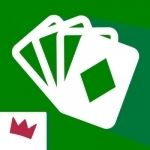
Solitaire Collection - Game
Games and Entertainment
App
Enjoy the most popular solitaire card games in one single app: Klondike and Pyramid! Discover the...

Curl Coach - Coach Beyond Statistics
Sports and Productivity
App
Curl Coach is the most powerful and easiest to use curling tool in the world. Used by Al Moore with...

Arboretum
Tabletop Game
Arboretum is a strategy card game for 2-4 players, aged 10 and up, that combines set collection,...
Boardgames CardGames BeautifulGames
Purple Phoenix Games (2266 KP) rated Gizmos in Tabletop Games
Apr 20, 2021
Gizmos is a card drafting, energy collecting, engine building game about, well, building engines. Players will be attempting to draft machine parts from an offer pyramid and build them onto their master jalopy machine using energy marbles in order to chain actions together and maximize their turns. The victorious player is they that claims the most VP from cards and bonus VP tokens at the end of the game.
To setup, assemble the energy dispenser (the marble gumball machine looking component) and place it on the table. Fill it with all the marbles and marvel at the first six that come out into a chute display. Separate and shuffle the card decks by their backs and set out four cards of level I, three cards of level II and two cards of level III. Determine starting player and give them the starting tableau board. Each player will receive a tableau board, an energy ring, and a starting gizmo to be placed under the File section of their board. The game may now begin!
On a player’s turn they will be completing one action from the four actions printed on their player board: File, Pick, Build, and Research. The File action is used when a player chooses a card from the gizmo pyramid (from any level) and places it in their Archive – an imaginary area to the right (or even above I’ve found) their player board. At the beginning of the game players will be able to hold just one gizmo in their Archive, but as they draft and build Upgrades, this number can increase. When choosing the Pick action, the player will simply choose one of the energy marbles from the dispenser chute and place them in their energy ring. Initially rings are only able to hold five marbles, but this also can be increased on future builds. To Build a gizmo into a player’s machine, the player will spend a specific color and number of energy marbles printed on the chosen gizmo card to place the card into their player tableau. These gizmos could possibly be Upgrades, energy Converters, or upgrades to the File, Pick, and Build actions. Pay the energy marble to the dispenser supply. Players will choose to Research when they do not like the gizmos on display in the gizmo pyramid. Researching allows players to draw the top cards from any face-down level deck and choose one to either File or Build.
The game is super simple to this point, but this is where the true strategy and tactics come into play. Though there will always be nine gizmos on display during a player’s turn, the value of these gizmos are in how they are used in the player tableau. Yes each gizmo allows for some benefit, but successful players will be able to utilize these benefits to create chain reactions. When an action is spent to do a thing, gizmos in play in the tableau will sometimes link to the action, or to the placement of a certain type of card, or a certain energy type (color) of gizmo built. It is mastering these chain reactions that creates next-level strategizing and separates the players from the champions. Play continues on in this fashion until a player has built their fourth level III gizmo or their 16th gizmo in total. Count up VP from built gizmos and bonus tokens earned from built gizmos throughout the game to see who wins the science fair (is that what happens at science fairs? People win those, right?)!
Components. So the gizmo cards are fine, and the cardboard components are fine as well. The marbles are interesting and bubbled plastic (or resin, I told you I’m not great at science) and come in great colors. The true star component here is that energy marble dispenser. It is absolutely brilliant. The game comes with assembly instructions, thankfully, but once it’s built, it’s built forever. It packs neatly back into the box, and the insert is very very well done. The artwork on this is surprisingly secondary to me. In fact, I don’t really remember even looking at much of the artwork on the gizmo cards as I was playing because I concentrate so much more on the effects of the gizmos and trying to figure out my next move to really sit and gawk at the art. The iconography takes a little time to get used to, but once you have seen it in action for a few rounds, you catch on quickly. All in all, a fine set of components, but with the insert and dispenser, now a great set of components.
I adore this game! I love engine builders, and the chain reactions you can create with your gizmos are excellent and can be very powerful. You can try to generate tons of bonus VP from your gizmos, or concentrate on versatile energy marbles using a bunch of Converters, or simply go guns blazing on everything you can afford to try to blitz to 16 gizmos built. Whatever your play style, Gizmos can certainly allow you to play your way while giving you choices upon choices to make each turn.
With all these positives, I had to find a negative, right? Well, ok, yes, but it’s super minor to me here. I don’t really feel like the theme is very immersive. Not once have I felt like I am building a machine in order to win a science fair, but I do feel like I need to maximize my turn every time in order to grab more energy, or to build better Upgrades and Converters so I can grab any gizmo I want and build it right away. So, theme is there, but not at all strong.
Though the theme is just okay, the game play certainly is stellar. This one has everything I like in an engine building game, and has unique and interesting components. Would I like it more if the theme was different. I doubt it. The game play is just so good that the theme and artwork takes a back seat for me, and that’s super weird for me to type. Should you be looking for a great engine building game that looks awesome on the table, has cool components, and allows you to play differently every game, then go find yourself a copy of Gizmos. Purple Phoenix Games gives it an energetic 21 / 24. Now if only my 4-year-old could keep the energy marbles in the chute or the ring and not on the floor…
